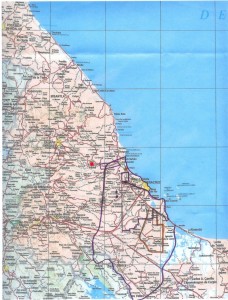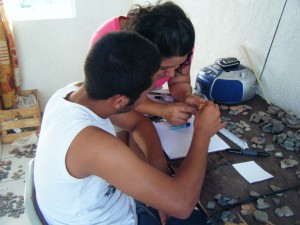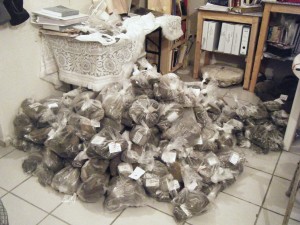After finishing the preliminary classification of artifacts according to their industry and raw material, we are genuinely scared about the amount of pieces left for analysis!!
The process for ceramics is simple but very systematic: we open the bags, separate the sherds in types previously defined by Dr. Annick Daneels for the region, then we quantify and describe everything in special forms created for that purpose. Finally, we take pictures of the classified fragments, and we select diagnostic, rims and other particular forms in order to draw them and create a sample for educational purposes as well as a reference for later surveys and excavations.
Undergraduate Universidad Veracruzana student Ely Vazquez Bello has joined our team and is helping us in this process. She is about to defend her thesis about La Joya, located in the Jamapa-Cotaxtla Basin, near the port of Veracruz. Her experience with that site’s artifacts is very enriching for our project.
We are starting to notice some regional varieties in the ceramics. Although all the types have been identified with the Gulf Coast traditions, we are beginning to believe that El Carrizal represents a transitional territory between the Gulf Lowlands and the Highlands. The large amount of lithic artifacts that we found here and their scarcity in the rest of the region also supports this thought. We will need to reinforce this proposal with further analysis, so now we’ll concentrate on the analysis process and then let the ideas flow and interpretations as well as hypothesis will emerge.

Central Veracruz map showing the Remojadas tradition boundaries (in blue). The red spot shows El Carrizal. (Map taken and modified from Chávez DÃaz 2007:53)
We haven’t started classifying the lithic artifacts yet, since we need to transport part of them to Xalapa. Fortunately, we have been granted access to the Universidad Veracruzana facilities at the Instituto de AntropologÃa. We have already asked permission to transport the lithics, since in Mexico, we have strict laws about archaeological artifacts. We cannot move them from place to place without a permit, otherwise we would be committing a federal crime! It can sound exaggerated but severe looting and traffic of monuments made firm laws necessary.
In the meantime, we’ll keep trying to discover some answers that are waiting for us in the artifacts!



